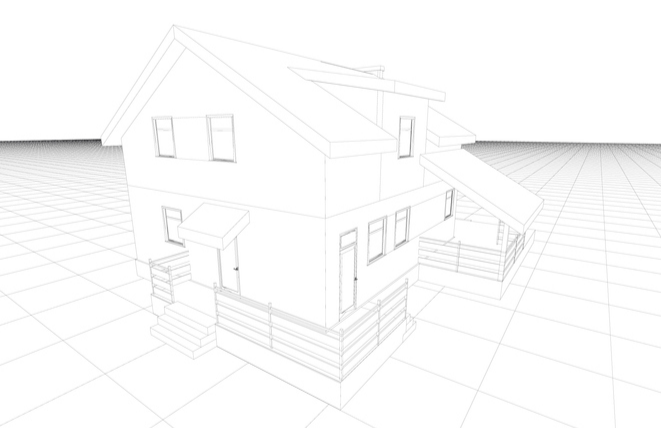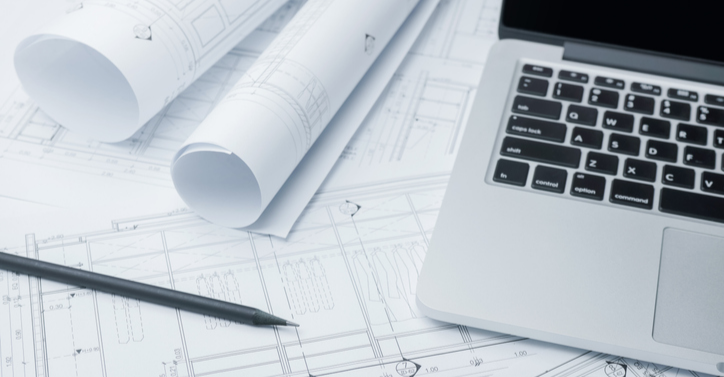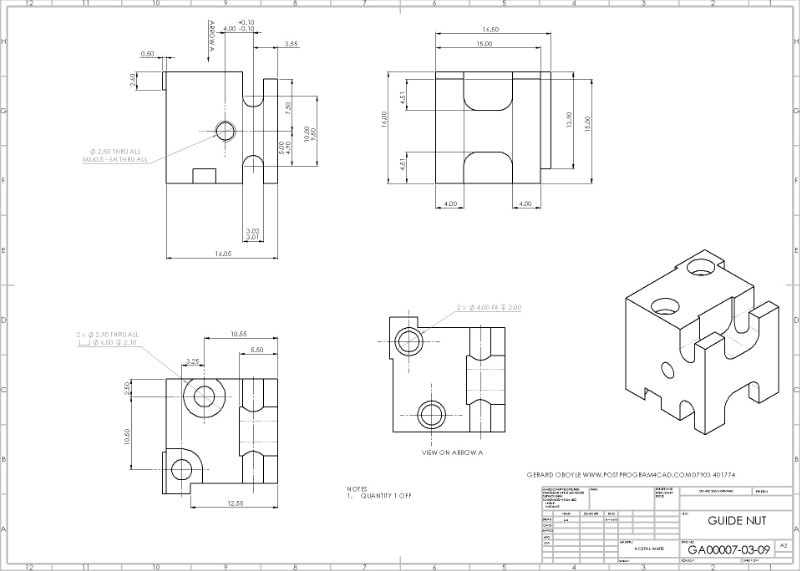Drawing sketches based on a list of technical details is one of the first steps in product creation. A lot of people say that you don’t need to be an artist to do this because the sketches are merely a rough visual representation of ideas. When the time comes, those drawings will go through a CAD conversion to make them photorealistic and visible as three-dimensional images.
A good freelance 3D modeling service should be able to draw a 3D image on a computer using only product specifications such as shape, color, texture, and dimension. However, you can speed up the process by providing an accurately hand-drawn product image to begin with. Either way, CAD conversion is indispensable prior to prototyping and developing marketing material.
The blueprints of buildings, bridges, towers, cars, bicycles, chairs, tables, and all other architectural or civil engineering designs are two-dimensional representations of how the structures or products should be constructed. The following information contains relevant data such as measurements and positions.
Blueprints are often detailed enough for any architect or engineer to understand, but sometimes, the images are not particularly attractive enough to be used as marketing pieces. CAD conversion is the next step to take.
RELATED: Freelance Image-to-CAD Conversion Services
Unfortunately, CAD conversion is more than scanning a piece of paper and storing the file on a computer. The process is called by that specific term to indicate that the converted file must be compatible with CAD software. Not only does the conversion transform two-dimensional drawings into 3D photorealistic images, but it also simplifies the documentation process.
Converted images are stored in a digital format for easier modification if need be. Thanks to 3D CAD software, you will then be able to change data more quickly while preserving the original file. You can even create an entirely new blueprint without so much as touching a pencil.
If it is the blueprint of a product, conversion to an electronic format is unavoidable in product lifecycle management (PLM). Designers and engineers are able to access the same exact digital data and work collaboratively, even remotely.
Why CAD?
As soon as the sketches are transformed into a CAD-compatible file format, you have the advantage of using a lot of computer-aided image manipulation tools, to perform tasks such as:
- Modification of the shapes, dimensions, colors, and textures in a breeze
- Image alteration with high precision down to micrometers
- Macros and scripts to speed up repetitive tasks
- Layers to create different floor plans for building in 3D
- Built-in symbols and icons
- Solid modeling program to input data regarding materials, weight, the center of gravity, volume, etc.
- Animation for various objects including animals, vegetation, mechanical parts, and humans
- Simulation to test performance.
If everybody in the design process works with the same file using 3D CAD software, the collective works of multiple individuals can solve any issue that may arise with the image at gratifying speed. There is no need to copy and create dozens of sketches for every change. All the works are compiled and integrated into the same digital file. It allows for the transfer of information in an instant via the Internet.
If your business involves product creation, you cannot compete in today’s market without digitizing product concepts and sketches. In fact, modern PLM business strategy focuses heavily on the centralization of data. To put it into the context of product creation, centralized data noticeably accelerates the product lifecycle.

You can come up with an approved design for prototyping or presentation purposes without requiring freelance product designers to work in the same room all the time. If they can access the database online, they can work from many different places. Even better, you can outsource the designing process to an external party, either a company or a freelancer, and still retain full control of the project.
How CAD Conversion Works
Once again, the job of a CAD conversion services expert involves more than just scanning. The process involves transforming two-dimensional sketches usually drawn on paper into three-dimensional images compatible with CAD software. One of the techniques involved is called “tracing,” or vectorization, which can be done either manually or automatically:
- Manual tracing, as the name suggests, requires you to trace the image using a computer mouse or graphics pen to give the sense of more natural, traditional hand motion. Depending on the complexity of the sketch, this can be a challenging technique to master and take quite a long time to master.
- Automatic tracing, on the other hand, uses software to draw a vector from a raster image, hence vectorization. A raster image is a pixel-based file comprised of tiny dots with colors and has a specific resolution; a vector is shape-based, and its image data is filled with mathematical equations to connect points and paths, describing image shape as well as geometry.
One of the most easily noticeable differences is that you can stretch (or zoom-in) a vector without losing clarity because it does not have a specific resolution as its raster alternative does. With the automatic method, vectorization software detects edges and lines of a raster image, and then redraws the image as vector.
Raster and vector images come in different file formats, but the latter is more easily edited in CAD software. The last step in the conversion is to make the vector compatible with the specific software you want to use, so you can open the file as a 3D image and view it from a 360-degree angle.
This is, of course, an obvious over-simplification of the CAD conversion process. In reality, the modeler pays careful attention to every little detail so that the converted image bears great resemblance to the physical object.
Why Outsource CAD Conversion?
Just like the design process itself, it is possible to outsource only the CAD services conversion job. Not everybody can use 3D CAD software to draw detailed photorealistic product images. Some people are not skilled enough to make good sketches. Fortunately, there are others who actually excel at these jobs, and are willing to offer their services for a fee. If hand-sketching is too challenging, you can hire a freelance illustrator to draw images based on your specifications. More photorealistic sketches should make the CAD conversion process easier too.
Because the sketching and CAD conversion processes can be outsourced to freelance CAD services or companies, product design is not a domain only for artists and 3D modelers. Everybody has ideas, and they have the freedom to try and make those ideas into reality. Whether you are working for a small company or as an individual without the resources to hire full-time professional modelers, outsourcing the CAD conversion task is a smart business move for various reasons, such as:
- Smaller production cost: Unless you are skillful enough to use a CAD conversion tool and software to create your required product image, chances are you will have to hire professionals to do the job. The initial investment in software is probably quite small, especially if you are using a free or open-source program. However, the professionals who handle the actual drawing part come at quite a cost – even more if you hire them as full-time employees. It is almost always less expensive to outsource, and you still get the 3D images you need. Choose the right freelancer to increase your chances of receiving high-quality works.
- Multiple budget options: Many outsourcing companies offer numerous packages to fit consumers’ needs and budgets. Some differences between top-of-the-range packages and the more affordable alternatives may include file formats, volumes of data, revisions, timeframe, etc. Most CAD conversion services are quite flexible and willing to comply with your personal requirements.
- Specialization: If you come across freelancers or agencies that offer CAD conversion services, chances are this is indeed their area of expertise. In other words, they have the experience necessary to handle many different sketches or designs and understand how to deal with each type appropriately. Even an agency that offers a wide range of 3D CAD services should hire multiple professionals with different sets of skills to work on separate projects. That being said, you still need to look at their portfolio and see if their previous works are in line with your expectations. Consistent quality is of the utmost importance.
- Better management of resources: Small companies with limited resources often choose to outsource because it allows them to manage their budget limitations. One of the main purposes of outsourcing is to cut overhead costs, so the available funds can be allocated to other more urgent necessities.
- Efficient use of time: Outsourcing the CAD conversion task gives you the time to stay focused on other parts of the project for a much faster product creation timeframe. Good communication with the outsourcing company or freelancer is crucial, but it should not be overly taxing to check on progress every few days or so. If possible, ask for deliverables to be shared on cloud-storage so you have easy access to the most updated version of the file all the time and give feedback appropriately.
It may sound difficult to believe, but big companies also take advantage of the outsourcing method (in many cases, they even hire an external service to handle the entire manufacturing process). There are many different factors that contribute to the popularity of outsourcing practices, especially for CAD-related tasks.
A lot of businesses under constant pressure from the market and competitors simply don’t have the luxury of a slow product lifecycle. They must release new products more frequently to keep up with the relentlessly changing consumer trends.

The current market landscape does not have a long memory span; today’s new product will be considered old enough to require replacement within just a year or perhaps less than that. CAD conversion is a laborious process, even for just one image.
Multiple large files may take weeks (if not months) for one employee to complete, and that’s assuming the employee is actually skillful enough to deliver high-quality outputs. Having the jobs done by an outsourcing company gives you a time window to simultaneously focus on related works such as production capacity plan or marketing strategies in the foreseeable future.
Potential Disadvantages of CAD Conversion Outsourcing
With all those benefits, outsourcing does seem to be a no-brainer. It speeds up the product lifecycle, saves production costs, and allows for more efficient use of time. However, a business decision that appears to be perfect also has potential disadvantages, including a possible financial loss to your company. Here are some things you should consider prior to making the decision to outsource:
- Intellectual property: Even before the design is released into the market, the ideas for that product are your intellectual property. Nobody else can make any claim of ownership or use the design for commercial purposes without legal consequences. The outsourcing party has access to your ideas, so you need to protect them by enforcing legally-binding documents, usually in the form of a non-disclosure agreement.
- Data security: Another concern is the possibility of a data Make sure you outsource only to a reputable company or freelancer that implements good data security practices, for example, encryption in every transfer of documents and deliverables, or premium cloud-storage.
- Poor quality: Outsourcing services come at different prices. A great deal is always welcome, but you inevitably get what you pay for. If something sounds too good to be true, it probably is. For example, an affordable CAD conversion service with quicker-than-usual turnaround time is almost always impossible, and it should raise doubts rather than confidence.
The disadvantages can be avoided with standard precautions. As a rule of thumb, always get quotes from at least a few different outsourcing companies or freelancers; be sure that you ask each of them to make an offer for the exact same services. Make the comparison between “apple and apple” to get fair results.
Pick one with the best balance of price and quality and keep the line of communication open regardless of which provider you choose. A good idea is to ask for periodic, albeit partial deliverables. This gives you the time and opportunity to provide feedback, including criticisms along the process. Divide the task into multiple stages of completion with every stage requiring your approval before the outsourcing company can move forward.
When In-House CAD Conversion Makes Sense
The biggest benefit of having a CAD conversion task done in-house is that you have full control over how the project is carried out right from the beginning to the very end. Working with your own team allows for more accessible, more direct communication all the time. You don’t have to worry about poor quality, data breaches, or issues with intellectual property, because no external party is involved.
Depending on the file size and number of images, it can take many days or even weeks to finish the job. Unless you have a dedicated CAD drafting services team, everybody in the company will have to take part and this will slow down the product lifecycle to a considerable extent. In-house CAD conversion is not impossible, but it only makes sense if you have full-time, skilled professionals and the financial resources to fund the tools necessary.
CAD software may not be a problem because there are some very good open-source options available for free. However, hiring professionals can be budget-demanding. In cases where CAD conversion only deals with small file sizes or just several images, outsourcing is unnecessary. As far as “conversion” is concerned, you can probably do this on your own with just some basic training beforehand.

The problem is that the converted file may still require further refinements using 3D CAD software, and unless you have what it takes to follow up with the remaining works to be done, outsourcing comes in handy.
In-house CAD conversion also makes sense for large companies. Small businesses tend to opt for the outsourcing option due to limited resources. They do not have the financial power to make large investments during the early stages of their ventures. As they grow and earn more profits, outsourcing becomes less attractive as a long-term solution.
Instead of relying on external parties to handle CAD conversion, such as PDF to DWG conversion, the companies invest in training programs for existing employees or even hire full-time professionals for the job. In the long run – and especially for companies that only have months between each product release – an in-house CAD team actually brings about more practical product lifecycle management.
This is not to say that in-house CAD conversion is impossible in small companies. Many start-ups today are built by creative people who have a strong background in graphic design. These individuals are familiar with and actually know their way around 3D CAD software; converting raster into vector should not be a problem. Keep in mind that start-ups are also less likely to deal with dozens of product blueprints to convert. In this specific situation, in-house CAD conversion makes much better financial sense.
Cad Crowd Has CAD Conversion Experts on Standby
For small companies or even individuals lacking CAD skills, the outsourcing method still promises good ROI, nevertheless. Just remember that CAD conversion is only a small part of the product creation process. The design – now drawn in 3D – is just about half-way to reaching the production line. It may require modifications, followed by rendering and prototyping before it gets to the manufacturing stage and is released to the market.
Regardless of what type of conversion service you require, whether that’s a 2D drawing to CAD or a PDF to CAD, we can connect you with conversion freelancers and companies to help you complete your project on budget and on time. If you’re interested in outsourcing your CAD conversion, contact us for a free quote.
